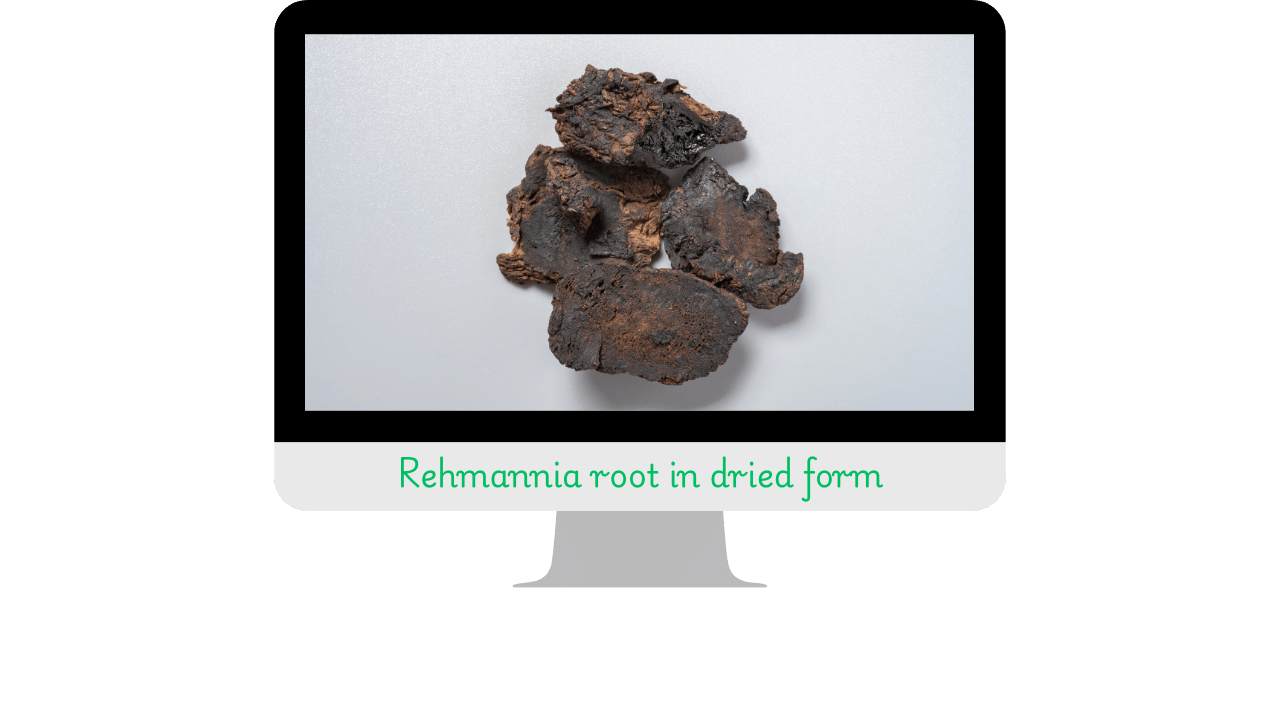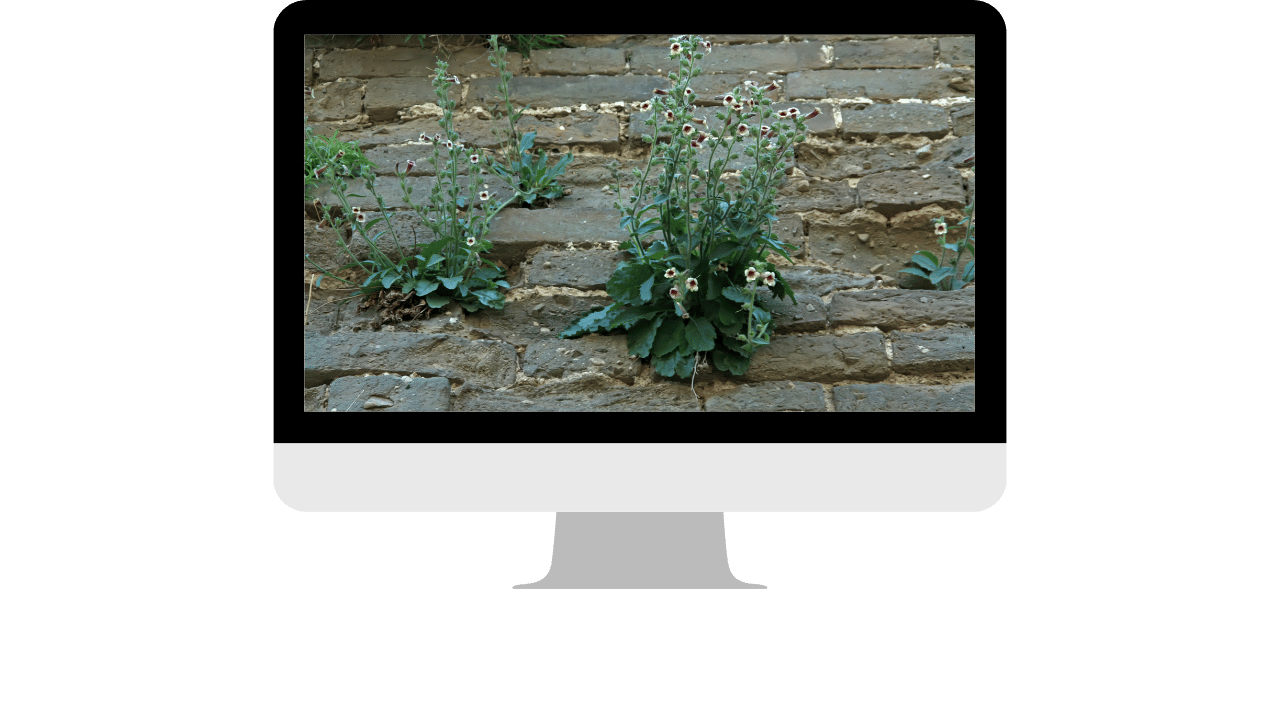Herbs | Last Modified:
Rehmannia Root: Benefits, Uses, Cultivation, and Side Effects of Sheng Di Huang and Shu Di Huang

What is Rehmannia?
This is one of the several excellent and An important Chinese tonic herb, Rehmannia’s appearance gave rise to its Western folk name “Chinese foxglove.” It is a member of the Scrophularia family. Rehmannia has played a significant role in traditional herbal medicine for centuries, a key ingredient in many ancient formulas. Its use dates back to the 4th century CE, when the renowned Chinese physician and alchemist Ge Hong mentioned it. In recent decades, Rehmannia has also been adopted into Western herbalism, as there are no direct equivalents or substitutes for it in Western pharmacopoeia. Rehmannia is a “longevity” herb with a marked tonic action on the liver and kidneys. Research has confirmed its traditional use, showing that it protects the liver and is useful for hepatitis.
The roots of Rehmannia glutinosa (Gaertn.) Libosch. and its varieties, including R. glutinosa var. hueichingensis (Chao et Schih) Hsiae, R. glutinosa var. purpurea Makino, and R. glutinosa var. lutea Makino, are widely utilized in traditional Chinese medicine (TCM). Rehmannia can be used in its fresh, dried, or processed (cured) forms, each with distinct Chinese names: it is known as "shen di huang" when uncured and "shu di huang" when cured. These different preparations are believed to have various therapeutic properties in TCM.
Where Rehmannia Grows and How It’s Cultivated

Rehmannia is a perennial herb that thrives in the sunny mountain slopes of northern and northeastern China, particularly in Henan province. It grows wild in these regions but can also be cultivated by sowing seeds in autumn or spring. This hardy plant reaches a height of about 40 cm and features light reddish-purple tubular flowers. Its distinctive thick, orange tuberous root, which measures approximately 3 to 6 cm in diameter, is harvested in the autumn after the plant has flowered. The root is highly valued and commonly used in traditional Chinese medicine.
Rehmannia Root: Benefits, Uses, and Healing Properties
Rehmannia root, a staple in traditional Chinese medicine, offers numerous health benefits and uses, making it a popular choice for natural remedies. Known for its ability to support various bodily functions, rehmannia root is used both in cooked and uncooked forms, each with distinct benefits. Cooked rehmannia root is commonly used to boost blood health, while the uncooked root helps cool and detoxify the blood.
Studies have shown that rehmannia root decreases anemia by increasing progesterone, the hormone that increases nutrition for mother and child. Studies also show that it lowers cholesterol and blood pressure. Recorded side effects of rehmannia root are mild and transient. These include diarrhea, abdominal pain, dizziness, lack of energy, and palpita tions. It is not a heart remedy but a mild blood-builder.
Key Benefits and Uses of Rehmannia Root
1. Liver Protection and Treatment of Hepatitis
Rehmannia is recognized as a powerful liver-protective herb in traditional Chinese medicine. Research has shown that it helps prevent liver poisoning and damage, making it a valuable remedy for liver health. Clinical trials in China have demonstrated its effectiveness in treating hepatitis, highlighting its potential as a natural liver remedy.
2. Boosts Blood Health and Reduces Anemia
Rehmannia root is known to aid in reducing anemia by increasing progesterone levels, which enhances nutrition for both mother and child. This makes it a mild but effective blood builder, rather than a heart-specific remedy.
3. Regulates Blood Sugar and Supports Pancreatic Function
Recent research indicates that rehmannia root plays a significant role in stabilizing blood sugar levels. It supports both liver and pancreatic functions, which is beneficial for those managing blood sugar-related conditions such as diabetes.
4. Lowers Cholesterol and Blood Pressure
In addition to its liver and blood sugar benefits, rehmannia root has been shown to help lower cholesterol and blood pressure, contributing to overall cardiovascular health.
5. Potential in Preventing Osteoporosis
Ongoing preclinical studies suggest that rehmannia root may have the potential to prevent osteoporosis, offering promising possibilities for future bone health applications.
6. Anti-Inflammatory and Adrenal Support
Rehmannia root is also recognized for its anti-inflammatory properties, which can be beneficial in managing autoimmune diseases and allergies. It supports the adrenal cortex and may protect against the suppressive effects of corticosteroid therapy and chemotherapy, enhancing overall resilience and health.
Additional Benefits
- Supports Adrenal Function: Sheng Di Huang may help prevent the suppressive effects of corticosteroid drugs on endogenous corticosteroid levels, making it a valuable support for adrenal function without the hypertensive effects associated with some other herbs.
Forms and Benefits of Sheng Di Huang (Uncured Rehmannia Root) and Shu Di Huang (Cured Rehmannia Root)
Rehmannia root is a vital herb in traditional Chinese medicine, used in different forms for various therapeutic purposes. This overview highlights the distinct benefits and applications of both Sheng Di Huang (uncured rehmannia) and Shu Di Huang (cured rehmannia).
Sheng Di Huang (Uncured Rehmannia Root)
Uncooked (Raw) Rehmannia Root
- Properties: Sweet, bitter, and cold.
- Benefits: Sheng Di Huang, the uncooked form of rehmannia root, is known for its ability to "cool the blood" and is used to manage high fevers and symptoms associated with heat patterns, such as thirst and a red tongue. It is effective for treating liver conditions, including hepatitis, and is also used for skin rashes, diabetes, low-grade fevers, and bleeding.
Therapeutic Actions and Indications
-
Clears Heat and Cools the Blood: Effective in reducing high fevers, thirst, and scarlet tongue caused by heat entering the nutritive level. It is also used for hemorrhage due to heat affecting the blood.
-
Nourishes Yin and Generates Fluids: Nourishes yin and generates fluids, addressing symptoms of yin deficiency like dry mouth, low-grade fever, and constipation. It also helps with throat pain related to yin deficiency.
-
Cools Heart Fire: Cools the upward-blazing fire of the heart, beneficial for conditions such as mouth and tongue sores, irritability, insomnia, afternoon or low-grade fevers, and malar flush.
-
Anti-Inflammatory and Adrenal Support: Provides anti-inflammatory support, aids adrenal function, and may help mitigate the suppressive effects of corticosteroid therapy and chemotherapy.
-
Antipyretic and Mild Laxative: Reduces fever and has mild laxative effects, useful for addressing constipation alongside its other benefits.
Shu Di Huang (Cured Rehmannia Root)
Shu Di Huang, or cured rehmannia root, is a processed form of rehmannia known for its sweet and slightly warm properties. This form is traditionally used to support various aspects of blood health and overall vitality. It enters the Heart, Kidney, and Liver channels, offering comprehensive benefits.
Traditional Therapeutic Uses
- Regulates Menstruation and Promotes Blood Production: Shu Di Huang is commonly used to address issues such as anemia, dizziness, weakness, tinnitus, amenorrhea (absent menstruation), and metrorrhagia (abnormal bleeding). It is particularly beneficial for menstrual irregularities and postpartum bleeding.
Actions and Indications
-
Tonifies the Blood: Effective for treating blood deficiency symptoms like pallid complexion, dizziness, palpitations, and insomnia. Shu Di Huang is frequently used to manage conditions where blood deficiency leads to irregular menstruation, uterine bleeding, and postpartum bleeding.
-
Nourishes the Yin: Supports Kidney yin deficiency, alleviating symptoms such as night sweats, nocturnal emissions, steaming bone disorder, and wasting and thirsting disorder.
-
Nourishes the Blood and Tonifies the Essence: Helps with low back pain, weakness in the lower extremities, lightheadedness, dizziness, tinnitus, diminished hearing, and premature graying of hair, which are associated with exhausted blood and essence. Shu Di Huang’s comprehensive properties and therapeutic actions make it a valuable herb for addressing a range of health issues related to blood and yin deficiencies.
Rehmannia root Side Effects
Rehmannia root is generally well-tolerated, with side effects being mild and temporary. These may include diarrhea, abdominal pain, dizziness, fatigue, and palpitations. Overall, rehmannia root is a versatile herb with a range of health benefits, particularly for blood health, liver protection, and blood sugar regulation, making it a valuable addition to natural wellness routines.
How to Use Rehmannia: Preparations, Dosage, Duration, and Safety
Preparations
Rehmannia can be utilized in various forms, each suited for different preferences and uses. Here’s a detailed look at the options available:
- Dried or Fresh Root: Both dried and fresh Rehmannia roots can be used. The choice between them depends on personal preference and the specific application.
- Decoction: This involves simmering the dried root in water to extract its beneficial compounds. It’s a traditional method for preparing herbal remedies.
- Liquid Extract: A concentrated form of Rehmannia obtained by soaking the root in solvent, making it easier to dose and consume.
- Tincture: Similar to liquid extract but typically more concentrated. It’s made by steeping the root in alcohol.
- Tablet or Capsule: These are convenient, pre-measured forms of Rehmannia that offer a consistent dose without the need for preparation.
Preparing Cured Rehmannia
For those using cured Rehmannia, here’s how it’s traditionally prepared: 1. Washing: Fresh roots are first washed in millet wine to clean them and enhance their properties. 2. Steaming: The roots are steamed to soften them and initiate the curing process. 3. Drying and Resteaming: After steaming, the roots are dried and then resteamed and redried several times. This process helps to develop and preserve the herb’s beneficial qualities.
Dosage Recommendations
The appropriate dosage of Rehmannia depends on the form used:
- Dried (Uncured) Root: For the decoction, the recommended dosage is 10 to 30 grams per day.
- Liquid Extract: The suggested dosage is 4 to 12 milliliters per day of a 1:2 liquid extract. Equivalent doses can be used if you are taking a tincture, tablet, or capsule.
Duration of Use
Rehmannia can be used long-term, depending on individual needs and health goals. Always consult with a healthcare provider for personalized advice.
Summary Assessment of Safety
Rehmannia is generally considered safe, with no adverse effects expected when used as directed. However, as with any herbal supplement, it’s best to monitor for any unusual reactions and consult a healthcare professional if you have concerns.
Closing Remarks
Thank you for delving into the world of Rehmannia with us! From its diverse preparations to its benefits and safe usage, we hope this guide enhances your understanding of this remarkable herb. Keep an eye out for more articles and insights to continue supporting your health journey.
